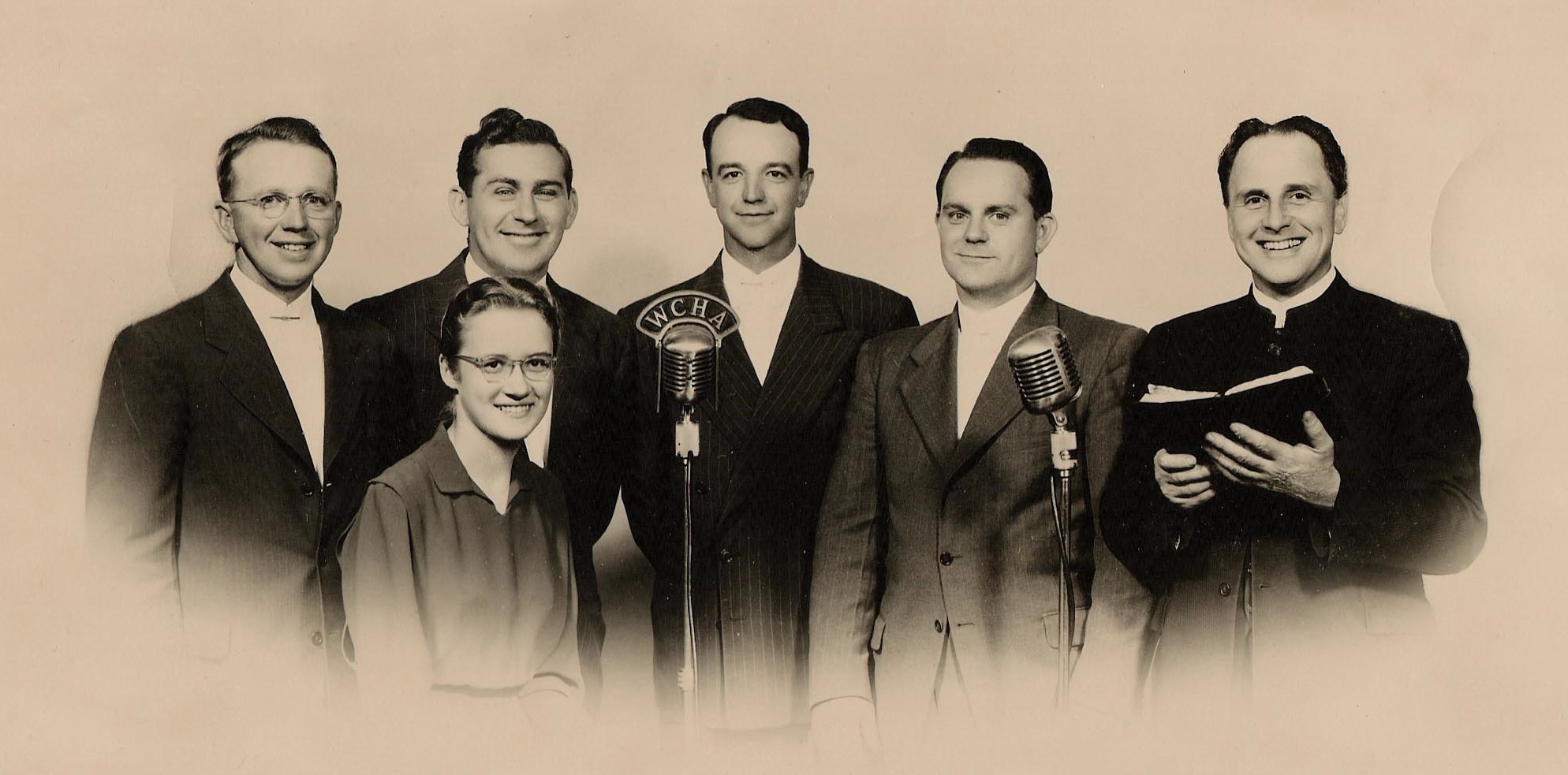
August 11, 2011 marked the 65th anniversary of the Christian radio broadcasting organization originally known as The Gospel Tide Hour. Today, the organization — known as simply The Tide — engages in international evangelism and discipleship ministry through Christian radio broadcasts in countries like Zimbabwe, India, and Romania. But at its founding in 1946, the Gospel Tide program was an innovative way for the separatist Brethren in Christ to extend their Gospel message to an audience that might have been distracted by the plain-garbed “ways of the Brethren.”
Today’s Photo Friday recognizes this milestone with a brief history and analysis of the Gospel Tide Hour, which first broadcast from Chambersburg, Pa., on August 11, 1946.
After the jump: A “plain people” launch a high-tech ministry.In the first half of the twentieth century, the Brethren in Christ were still visibly committed to separation from “the world” — a theological and practical disposition that compelled them to pursue alternative patterns of dress, speech, and recreation. Part of that separation entailed a rejection of “worldly” media like movies and theater (and, sometime later, television). Radio, initially, was looked upon as a menace to be avoided; gradually, some Brethren in Christ — citing its utilitarian purpose in bringing news and weather reports to geographically isolated farms — began to utilize the medium.
By the 1940s, Brethren in Christ people were listening to the radio for a variety of reasons, including religious edification. Some members recall listening to fundamentalist radio programs like the Old Fashioned Revival Hour, a weekly religious program featuring sermons by Charles E. Fuller.
Given this engagement with this new media form, it is perhaps to be expected that, in 1946, one ambitious Brethren in Christ evangelist — Charlie B. Byers — organized and produced a Christian radio program, the Gospel Tide Radio Hour.
Here’s a bit more on those origins, from The Tide’s website:
The ministry of The Tide began in 1946 as a thirty minute local radio broadcast in Chambersburg, Pennsylvania, known as The Gospel Tide Hour. Founded by Rev. Charlie Byers, pastor of a [Brethren in Christ] church in Chambersburg, the initial mission of The Gospel Tide Hour was to reach the Chambersburg community for Christ. Within a few years the success of the program opened doors to expand into other communities in North America, and by 1963 it had grown into an independent ministry incorporated as the Gospel Tide Broadcasting Association.
The next year, the Brethren in Christ Church endorsed the Gospel Tide Hour as the denomination’s “official” radio broadcast. Historian Carlton O. Wittlinger tells that element of the story:
In 1964, to meet the need for a more clearly defined radio voice of the brotherhood, General Conference endorsed the Gospel Tide Hour as the official radio broadcast of the Brethren in Christ Church. The program had been on the air for seventeen years and continued to expand in outreach and to improve in quality . . . . Conference therefore authorized the Commission on Radio to establish a working relationship with the corporation so that the broadcast might be made available to the entire brotherhood. This was done without recourse to financial underwriting by the church . . .
While both of these historical sketches stress the evangelistic and financial/dissemination aspects of this innovative ministry, those are not the only parts of the story. Attention should be given to the fact that this endeavor — and the ones like it that other Brethren in Christ people developed in the 1950s and 1960s — linked the separatist Brethren in Christ to Protestant bodies beyond their community. It seems clear, with the perspective of history, that leaders like Byers were consciously borrowing from fundamentalism in their appropriation of this technology. (Church historians have demonstrated that fundamentalism was at the forefront of using new media for evangelism.) Co-opting this method of “airwave evangelism” was a decisive move that would shape the Brethren in Christ for years to come.
For a full history of the Gospel Tide Radio Hour, see E. Morris Sider, Touching Hearts on Shores Worldwide: Sixty Years of Gospel Tide Radio Ministry (Chambersburg, Pa.: The Tide, 2007).
